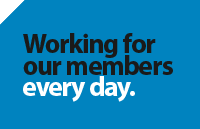 This month we hear again from Zaida Fazlic, vice president of people, culture, and change management at Taiga Building Products, the national building materials wholesaler.
This month we hear again from Zaida Fazlic, vice president of people, culture, and change management at Taiga Building Products, the national building materials wholesaler.
Workers from different generations have distinctive perspectives than can be mutually enriching and shouldn’t be reduced to stereotypes. That was Zaida Fazlic’s message to delegates at the 27th Hardlines Conference last month in Whistler, B.C. Fazlic is the HR lead at Taiga Building Products.
Fazlic herself identifies as an “Xennial” or “elder millennial,” “on the cusp” of the turn from Gen X to the millennial generation.
“Each generation has their own version how it was hard for them. It was hard for my parents, it’s hard for my generation, and it’s hard for my son and his generation. But it’s not a contest.”
There are currently four generations in the workplace, Fazlic explained.
Baby boomers, those closest to retirement, are characterized by their “strong work ethic, loyalty to organizations, and their experience of major historic events.” They’re followed by generation X, which came of age during the advent of personal computing and so is “independent, adaptable, and tech-savvy.”
Millennials, or Generation Y, were broadly born around the last decade of the Cold War. While they may tend to have a more holistic view of work-life balance, Fazlic stressed that “millennials are also hard-working and driven and will deliver.”
Gen Z is the new kid on the block, just arriving in the workforce: “Just as managers are starting to figure out millennials, there’s a new kid on the block.” While millennials grew up with digital technology from a young age, Gen Z are “digital natives” who have never known anything else. Fazlic describes them as “purpose-driven” workers who “prefer to work with organizations whose values align with their own.”
According to Fazlic, organizations can thrive when team members across generations can bring together their insights to work in harmony and remain open to one another’s perspectives and experiences.
“Communication is the big one for bridging the understanding gap between generations. Older generations need to be patient with the younger ones as they figure out their own struggles and become adults. Younger gens need to remain open-minded about learning from older generations.”
“As much as we’re different, we also have a lot in common.”
(PHOTO: Josef Povazan)




































